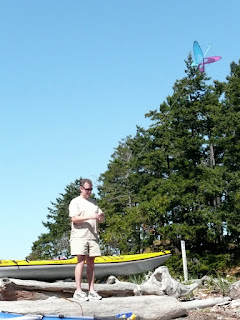Cypress Island is the last largely undeveloped island in the San Juan group. Cypress Island provides a scenic reminder to passers-by of a rustic, pre-settlement western Washington. On the 5,500 acre island, DNR manages 4,800 acres, with 3,933 acres of forests, wetlands, grassy balds and marine areas currently protected under NRCA designation.
The southern two-thirds of the island is the only protected low-elevation forest growing on serpentine soils in Washington, and supports unusual plant communities. The island's steep topography offers vistas of the San Juan Islands, the Strait of Juan de Fuca, mainland Washington and the Olympic and Cascade mountains. Cypress is a popular site for boaters offering primitive camping, lakes and miles of trails and abandoned roads
http://www.dnr.wa.gov/AboutDNR/ManagedLands/Pages/amp_na_cypress_island.aspxBecause we had plans with friends on Sunday, we drove to Anacortes on Friday for the free concert at the marina, followed by drinks with our boating friend Bruce and a comfortable night's sleep at our slip. Bruce gave us a great recommendation for breakfast on Saturday and, after a hearty breakfast, we were underway for Cypress Head, which is a comfortable 45 minutes from Cap Sante Boat Haven at 6 knots.
Once we anchored, I launched the dinghy and we landed on a beach full of kayaks. I even got a chance to fly my new kite from King's Market in Friday Harbor. It it 3 oval-shaped sections with a ventilation hole in the lower third; I'm not quite sure why the design can fly but it works well. If you look carefully in the upper right-hand corner of the photo, you can see my little kite aloft.
However, the best part of the day was our steak dinner for lunch (!!!) We never eat that well midday, but since me met Bruce after I bought the steak, we decided to live well at anchor. The Admiral sauteed the best Walla Walla sweet onion I've ever had and even made lemonade. After lunch and a walk around Cypress Head, we returned to Cap Sante. What a great day. Stay tuned for more adventures from Cypress.









